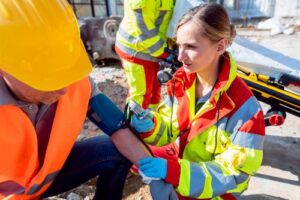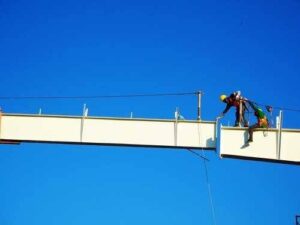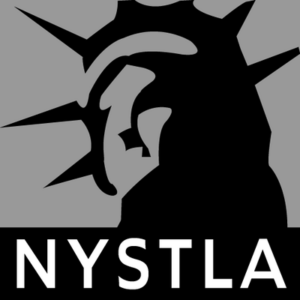Construction sites in New York are dynamic environments filled with activity, machinery, and numerous workers. Despite the city’s reputation for its iconic skyline and continuous development, the reality is that construction sites can be perilous places. Accidents are an unfortunate and frequent occurrence, often leading to serious injuries or even fatalities. The intricate interplay of heavy equipment, hazardous materials, and high elevations creates a landscape where safety must be a paramount concern. Understanding the common causes of construction accidents is crucial for preventing them and ensuring the well-being of all workers involved in these projects.
One of the primary causes of construction accidents in New York is falls. Whether from scaffolding, ladders, or roofs, falls account for a significant percentage of construction-related injuries and deaths. Workers operating at significant heights are particularly vulnerable, and the absence or improper use of fall protection equipment can lead to devastating consequences. Despite stringent safety regulations, falls continue to be a major hazard, underscoring the need for rigorous safety protocols and training. Ensuring that all workers are equipped with and use proper fall protection gear, such as harnesses and guardrails, can significantly reduce the risk of falls. Additionally, regular safety inspections and maintenance of equipment can prevent structural failures that may lead to falls.
Another prevalent cause of construction accidents is being struck by objects. This category encompasses incidents where workers are hit by falling tools, materials, or debris. Construction sites often involve work at various levels, with activities taking place simultaneously above and below. This verticality increases the likelihood of objects falling from heights and striking workers below. To mitigate this risk, it is essential to enforce strict protocols for securing tools and materials at elevated work areas. Moreover, implementing the use of safety nets, toe boards, and debris chutes can help contain falling objects and protect workers from harm. Personal protective equipment, such as hard hats, also plays a critical role in safeguarding workers from head injuries caused by falling objects.
Electrocutions represent another significant hazard on construction sites. The extensive use of electrical systems, tools, and machinery in construction work increases the risk of electrical accidents. These incidents can occur due to contact with live wires, faulty equipment, or improper grounding. Workers who are not adequately trained in electrical safety are particularly at risk. It is imperative to ensure that all electrical work is performed by qualified personnel and that strict adherence to safety standards is maintained. Regular inspections of electrical systems and equipment can identify potential hazards before they result in accidents. Additionally, providing comprehensive training on electrical safety and ensuring that all workers are aware of the dangers associated with electricity can help prevent electrocutions.
Caught-in or caught-between accidents are also a common cause of injuries on construction sites. These incidents occur when workers are caught in or compressed by equipment or objects, or when they are struck, caught, or crushed by collapsing structures. Such accidents can result in severe injuries, including fractures, amputations, and even fatalities. To reduce the risk of caught-in or caught-between accidents, it is crucial to establish clear protocols for the operation of heavy machinery and the movement of materials. Ensuring that all workers are trained on the safe use of equipment and the importance of maintaining a safe distance from operating machinery can prevent many of these incidents. Additionally, regular inspections and maintenance of equipment can help identify and address potential hazards before they lead to accidents.
Trench collapses pose a significant risk to construction workers, particularly those involved in excavation work. Trenches are often necessary for installing utilities and other underground infrastructure, but they can be inherently unstable. A trench collapse can bury workers in seconds, leading to suffocation, crush injuries, and fatalities. To prevent trench collapses, it is essential to implement proper shoring and sloping techniques to stabilize the trench walls. Additionally, conducting thorough soil analysis and monitoring the trench conditions throughout the project can help identify potential risks. Ensuring that workers are trained in trench safety and the proper use of protective systems is also critical for preventing these deadly incidents.
Hazardous materials are another source of danger on construction sites. Workers may be exposed to chemicals, asbestos, lead, and other toxic substances that can cause serious health issues. Inhalation, skin contact, or ingestion of these materials can lead to acute injuries or long-term illnesses. To protect workers from hazardous materials, it is essential to implement strict safety protocols for the handling, storage, and disposal of these substances. Providing appropriate personal protective equipment, such as respirators and gloves, can also help minimize exposure. Additionally, educating workers on the dangers of hazardous materials and the importance of following safety procedures is crucial for preventing injuries and illnesses.
Machinery accidents are a common occurrence on construction sites due to the extensive use of heavy equipment, such as cranes, bulldozers, and forklifts. These machines can be dangerous if not operated correctly, and accidents can result from equipment malfunction, operator error, or inadequate maintenance. To prevent machinery accidents, it is vital to ensure that all equipment is regularly inspected and maintained according to the manufacturer’s guidelines. Operators should receive comprehensive training on the safe use of machinery and be aware of the specific hazards associated with each piece of equipment. Additionally, establishing clear communication protocols and ensuring that workers remain aware of their surroundings can help prevent accidents involving heavy machinery.
Related Videos
How should I choose a personal injury attorney for my claim?
Insurance companies dirty tricks
Overexertion and repetitive stress injuries are also significant concerns for construction workers. The physical demands of construction work often require lifting, carrying, and repetitive movements, which can lead to musculoskeletal injuries. These injuries may develop gradually over time and can result in chronic pain and disability. To reduce the risk of overexertion and repetitive stress injuries, it is important to implement ergonomic practices and provide workers with training on proper lifting techniques. Ensuring that workers take regular breaks and encouraging them to report any pain or discomfort early can also help prevent these injuries from becoming severe.
Weather conditions can also contribute to construction accidents. New York experiences a wide range of weather, from hot summers to freezing winters, and these conditions can affect the safety of construction sites. Extreme heat can lead to heat stress and dehydration, while cold weather can cause hypothermia and frostbite. Additionally, rain, snow, and ice can create slippery surfaces and reduce visibility, increasing the risk of falls and other accidents. To mitigate the impact of weather conditions, it is important to implement weather-specific safety protocols. Providing workers with appropriate clothing and gear, ensuring proper hydration and breaks during extreme weather, and conducting regular site assessments to identify and address weather-related hazards can help protect workers from weather-related accidents.
Despite the numerous safety regulations and protocols in place, construction accidents remain a significant concern in New York. The high-paced nature of construction work, combined with the inherent hazards of the industry, creates an environment where accidents can happen quickly and unexpectedly. Ensuring the safety of construction workers requires a comprehensive approach that includes rigorous training, strict adherence to safety standards, regular inspections and maintenance, and a commitment to continuous improvement.
What Damages Can You Recover in a Wyoming County Construction Accident Case
Construction accidents can lead to devastating consequences, leaving victims and their families grappling with physical, emotional, and financial hardships. In Wyoming County, New York, understanding the scope of damages that can be recovered in a construction accident case is crucial for individuals seeking compensation and justice.
When accidents occur on construction sites, the aftermath can be complex and multifaceted. Determining the types of damages that can be pursued in a Wyoming county construction accident case involves considering various factors, including the extent of injuries, liability, and the specific circumstances surrounding the incident.
Types of Recoverable Damages
Medical Expenses
Current and Future Costs
This includes hospital bills, surgeries, medications, rehabilitation, and ongoing medical care necessitated by the injuries sustained in the accident.
Lost Wages and Future Earnings
Income Loss
Compensation for the wages or income lost due to the inability to work immediately after the accident and potential future earnings if the injuries impact the victim’s ability to work in the long term.
Pain and Suffering
Physical and Emotional Distress
Compensation for the pain, suffering, and emotional trauma endured as a result of the accident. This can encompass both physical pain and mental anguish.
Disability and Disfigurement
Permanent Impairment
If the accident leads to a disability or disfigurement that affects the victim’s ability to lead a normal life, compensation may be sought for these lasting impacts.
Property Damage
Damaged Equipment or Property
If personal belongings or property were damaged or lost in the accident, compensation for repair or replacement may be pursued.
Loss of Consortium
Impact on Relationships
In cases where the injuries significantly impact the victim’s relationship with their spouse or family, compensation may be sought for the loss of companionship or support.
Understanding Liability
Determining liability is crucial in construction accident cases. Parties potentially responsible for the accident may include the construction company, contractors, subcontractors, equipment manufacturers, or property owners. Wyoming County follows comparative negligence laws, meaning that if the victim is found partially at fault for the accident, their compensation may be reduced proportionally.
Legal Assistance
Navigating the legal complexities of a construction accident case in Wyoming county requires skilled legal representation. Consulting with an experienced personal injury attorney focusing on construction accidents is essential. They can assess the case, gather evidence, and advocate for fair compensation on behalf of the victim.
Construction accidents can lead to severe injuries, impacting victims physically, emotionally, and financially. In Wyoming County, individuals affected by such incidents have the right to seek compensation for various damages incurred due to the negligence or fault of others involved in the construction project. Understanding the types of damages recoverable in these cases, along with the importance of legal counsel, is crucial for pursuing justice and securing the compensation deserved by the victims and their families.
Understanding Scaffold Accidents and West Seneca, New York Law
Scaffold accidents are unfortunately common in the construction industry, leading to severe injuries and even fatalities. Workers who are involved in scaffold-related incidents often face a long road to recovery, both physically and financially. Understanding the specific laws and requirements in West Seneca, New York, is crucial for both employers and employees to ensure a safe working environment and proper compensation in case of accidents.
The Legal Landscape in West Seneca, New York
West Seneca, like many other places, has established laws and regulations to safeguard workers in the construction industry. The Occupational Safety and Health Administration (OSHA) sets forth federal standards, but individual states can also have additional regulations. In West Seneca, the New York Department of Labor plays a significant role in overseeing workplace safety, including scaffold usage.
Understanding Scaffold Accidents
Scaffold accidents can occur due to various factors, such as inadequate training, faulty equipment, or unsafe working conditions. Common causes include falls from heights, collapsing scaffolds, falling objects, and electrocution. These accidents often result in serious injuries, including fractures, spinal cord injuries, traumatic brain injuries, and, tragically, loss of life.
Employer Responsibilities
Employers in West Seneca are legally obligated to provide a safe and secure working environment for their employees. This includes ensuring that scaffolds are properly constructed, maintained, and inspected regularly. Employers must also provide adequate training to workers involved in scaffold-related tasks and equip them with appropriate safety gear.
New York Labor Law Section 240
New York Labor Law Section 240, commonly known as the Scaffold Law, is a crucial piece of legislation designed to protect construction workers. This law places strict liability on employers and property owners for scaffolding-related accidents. If a worker falls or is injured due to a scaffold-related incident, the responsible party can be held liable, regardless of the worker’s own negligence.
The Scaffold Law covers various aspects, including the proper construction and maintenance of scaffolds, securing workers with safety devices, and ensuring that all equipment meets safety standards. This law emphasizes the importance of providing a secure and hazard-free environment for workers at elevated heights
Workers’ Compensation in West Seneca
In addition to the Scaffold Law, West Seneca follows the workers’ compensation system, which provides financial and medical benefits to workers who suffer job-related injuries or illnesses. Workers’ compensation is a no-fault system, meaning that employees are entitled to benefits regardless of who is at fault for the accident.
However, navigating the workers’ compensation process can be complex, and workers may encounter challenges in obtaining the full compensation they deserve. Having legal representation from an experienced personal injury attorney can significantly improve the chances of a successful workers’ compensation claim.
The Road to Recovery
Recovering from a scaffold accident involves not only legal proceedings but also physical and emotional healing. After such a traumatic event, it is crucial for the injured worker to prioritize their well-being. Seeking immediate medical attention is paramount to addressing injuries and preventing long-term complications.
In many cases, rehabilitation and ongoing medical care may be necessary for a full recovery. Physical therapy, counseling, and other support services can play a vital role in helping individuals rebuild their lives after a scaffold accident. It’s essential for those affected to work closely with healthcare professionals to develop a comprehensive plan tailored to their specific needs.
Support Systems
Facing the aftermath of a scaffold accident can be overwhelming, not only for the injured worker but also for their families. Emotional support is crucial during this challenging time, and seeking assistance from friends, family, and support groups can make a significant difference. Many individuals find comfort in connecting with others who have gone through similar experiences, sharing stories and coping strategies.
Understanding the Workers’ Compensation Process
As injured workers focus on their recovery, understanding the workers’ compensation process becomes crucial. Navigating the legal aspects of a claim can be complex, and having a knowledgeable advocate by your side can alleviate much of the stress.
Workers’ compensation benefits typically cover medical expenses, rehabilitation costs, and a portion of lost wages. However, insurance companies may attempt to minimize payouts, and disputes over the extent of injuries or the need for ongoing treatment can arise. Having legal representation ensures that your rights are protected and that you receive the full compensation you are entitled to under the law.
Scaffold accidents can have devastating consequences for construction workers, impacting their lives physically, emotionally, and financially. Understanding the legal landscape in West Seneca, including the Scaffold Law and workers’ compensation system, is essential for both employers and employees.
How Long Do You Have to File a Construction Accident Lawsuit in New York?
Accidents on construction sites can lead to life-altering consequences for workers. In the aftermath of such incidents, it is crucial to understand the legal timeframe within which a construction accident lawsuit must be filed in the state of New York. The Nicotra Law Firm, PC, recognizes the complexities of construction accident cases and provides invaluable insights into the timing requirements associated with filing a lawsuit.
Understanding the Statute of Limitations
The Statute of Limitations is a fundamental aspect of the legal system, setting the maximum period within which legal proceedings can be initiated after an incident. In New York, the statute governing construction accident lawsuits varies depending on the type of claim. Generally, personal injury claims resulting from construction accidents fall under a three-year statute of limitations.
For those affected by a construction accident, this three-year window begins from the date of the incident. It is essential to comprehend the significance of adhering to this timeline, as failure to file within the stipulated period can result in the forfeiture of the right to seek compensation.
Identifying the Triggering Events
To fully grasp the intricacies of the statute of limitations, one must identify the triggering events that mark the commencement of the countdown. In construction accident cases, the trigger is often the date of the accident. Whether it involves a fall from heights, equipment malfunctions, or other on-site mishaps, the countdown begins from the moment the incident occurs.
However, there are instances where the triggering event may not be immediately apparent. For example, exposure to hazardous materials may lead to health issues that only manifest over time. In such cases, the statute of limitations may be calculated from the date the injury is discovered or reasonably should have been discovered.
Exceptions to the Rule
While the three-year statute of limitations is a general guideline, exceptions exist. Certain circumstances may warrant an extension of the filing period. One notable exception involves claims against public entities or municipalities, where a Notice of Claim must be filed within 90 days of the incident, and the lawsuit initiated within one year and 90 days.
Moreover, if the injured party is a minor or mentally incapacitated at the time of the accident, the statute of limitations is tolled until the individual reaches the age of 18 or regains mental capacity. These exceptions underscore the importance of consulting with legal professionals promptly to determine the applicable timelines for filing a construction accident lawsuit.
Gathering Essential Evidence
Apart from adhering to the statutory deadlines, the success of a construction accident lawsuit hinges on the availability and quality of evidence. Building a strong case requires a meticulous approach to collecting relevant information, which can include medical records, accident reports, witness statements, and documentation of the conditions at the construction site.
Securing this evidence promptly is crucial, as delays may lead to the loss or deterioration of critical information. The Nicotra Law Firm, PC, recognizes the urgency in gathering evidence and emphasizes the need for a swift and comprehensive investigation to support the legal claim.
Consulting Legal Counsel
Given the complexities and nuances of construction accident cases, seeking legal counsel early in the process is paramount. Experienced attorneys, such as those at The Nicotra Law Firm, PC, possess the knowledge and experience to navigate the legal landscape, ensuring that all necessary steps are taken within the prescribed timeframes.
Engaging legal representation promptly also allows for a thorough evaluation of the case, including an assessment of liability, potential damages, and any applicable exceptions to the statute of limitations. This proactive approach enhances the likelihood of a successful outcome for the injured party.
The Importance of Timely Action
Construction accidents often leave victims grappling with physical, emotional, and financial challenges. The legal system acknowledges these difficulties, providing a window of time within which affected individuals can seek justice and compensation. However, this window is finite, and understanding the importance of timely action is critical.
Procrastination in pursuing a construction accident lawsuit can have dire consequences, potentially jeopardizing the ability to recover damages. The complexities of these cases, coupled with the need for comprehensive evidence, underscore the urgency in consulting with legal professionals as soon as possible after an incident.
Rebuilding Lives After a Construction Accident
Beyond the legal complexities surrounding construction accident lawsuits, it is essential to recognize the broader impact these incidents can have on individuals and their families. The aftermath of a construction accident often extends far beyond the courtroom, encompassing physical rehabilitation, emotional healing, and financial stability.
What Is Negligence in Construction Accidents?
Negligence is a legal term used to describe situations where someone fails to act responsibly, causing harm to another person. In the context of construction accidents, negligence occurs when an employer, contractor, or another party involved in the construction project fails to provide a safe environment for workers. Construction sites are filled with hazards, from heavy machinery and scaffolding to electrical systems and large equipment. If the people in charge do not take proper safety measures, accidents can happen.
Negligence in construction accidents can take many forms. It might be failing to provide safety gear, not securing heavy equipment, or ignoring safety regulations. When these oversights happen, workers can be put in dangerous situations. For example, a worker may fall from a scaffold because it was not properly secured. If the company responsible for the scaffold did not follow safety guidelines, they could be considered negligent. Similarly, if an employer does not train workers on how to operate dangerous machinery, and an injury occurs, that lack of training could be considered negligence.
Understanding how negligence applies to your situation is important if you are injured in a construction accident. Proving negligence can help you hold the responsible party accountable and seek compensation for your injuries.
Common Causes of Construction Accidents in New York
Construction sites are busy places where many different tasks are happening at the same time. Because of the complex nature of these sites, accidents can happen in a variety of ways. Some of the most common causes of construction accidents in New York include falls from heights, machinery accidents, electrical shocks, and falling objects. Each of these hazards presents unique dangers, and when safety procedures are not followed, they can lead to devastating consequences.
Falls from heights are one of the leading causes of injuries and deaths on construction sites. Workers often need to perform tasks on scaffolds, ladders, or rooftops, which places them at significant risk of falling. If proper safety harnesses and railings are not used, a worker can suffer serious injuries. Machinery accidents also pose a significant threat. Construction workers often use heavy equipment like forklifts, cranes, and power tools. If this equipment is not maintained or operated correctly, accidents can happen.
Electrical shocks and electrocution are also common on construction sites, especially when workers are exposed to live wires or electrical systems that are not properly secured. Falling objects, such as tools, materials, or debris, can also cause severe injuries. These objects can strike workers who are on the ground or lower levels of the construction site, leading to head injuries, broken bones, or worse. The key factor in many of these accidents is the failure to follow safety protocols, which is often linked to negligence.
The Role of Safety Regulations in Preventing Accidents
New York has strict safety regulations that construction companies and contractors must follow to protect workers from harm. These regulations are designed to reduce the risk of accidents by ensuring that all safety measures are in place. For example, companies are required to provide workers with proper safety gear, such as hard hats, gloves, and safety harnesses. Scaffolding must be secured according to specific guidelines, and machinery must be inspected regularly to ensure that it is safe to use.
The Occupational Safety and Health Administration (OSHA) is one of the organizations that sets these safety standards. OSHA regulations cover many aspects of construction work, including fall protection, machine safety, and electrical hazards. Employers are responsible for making sure that all workers are trained on these safety standards and that
they are followed correctly at all times. If an employer or contractor ignores these regulations, they may be held liable for any accidents that occur as a result of their negligence.
Unfortunately, not all construction companies prioritize safety. Some may cut corners to save time or money, ignoring important safety guidelines. When this happens, workers are put in harm’s way. If a worker is injured because safety regulations were not followed, the company or contractor responsible for the site could be considered negligent. This means that the injured worker may be entitled to compensation for their injuries, medical bills, and lost wages.
Who Can Be Held Responsible for Construction Accidents?
When a construction accident occurs, determining who is responsible can be complicated. Several parties may be involved in a construction project, including the property owner, general contractor, subcontractors, and equipment manufacturers. In many cases, more than one party may be found negligent and held responsible for the accident.
The property owner may be liable if they fail to ensure that the construction site is safe. For example, if the property has dangerous conditions that were not addressed, the owner may be considered negligent. The general contractor is usually responsible for managing the overall safety of the construction site. This includes making sure that all safety regulations are followed and that workers are provided with the necessary equipment and training to do their jobs safely. If the general contractor fails in these duties, they may be held liable for any accidents that occur.
Subcontractors may also be held responsible if they were negligent in their specific area of work. For example, if an electrical subcontractor fails to properly secure live wires and a worker is electrocuted, the subcontractor could be liable for the accident. Additionally, if faulty equipment causes an accident, the manufacturer of the equipment could be held responsible. In these cases, a thorough investigation is necessary to determine which parties are at fault.
Understanding Your Legal Rights After a Construction Accident
If you are injured in a construction accident, it is important to know your legal rights. In New York, workers have the right to seek compensation for their injuries, especially when those injuries are caused by negligence. One option is to file a workers’ compensation claim. Workers’ compensation is a form of insurance that provides benefits to employees who are injured on the job. These benefits can include coverage for medical expenses, a portion of lost wages, and rehabilitation costs.
Workers’ compensation is generally available regardless of who is at fault for the accident. However, it is important to note that workers’ compensation benefits may not cover all of your expenses. In some cases, injured workers may also have the option to file a personal injury lawsuit if negligence played a role in the accident. Unlike a workers’ compensation claim, a personal injury lawsuit allows you to seek compensation for the full extent of your damages, including pain and suffering, emotional distress, and all lost wages.
At The Nicotra Law Firm, PC, we understand the complexities and challenges associated with construction accidents. Our team is dedicated to advocating for the rights of injured workers and helping them navigate the legal process to secure the compensation they deserve. If you or a loved one has been involved in a construction accident in New York, we are here to help. Contact us today for a consultation and let us assist you in obtaining the justice and support you need during this difficult time.








